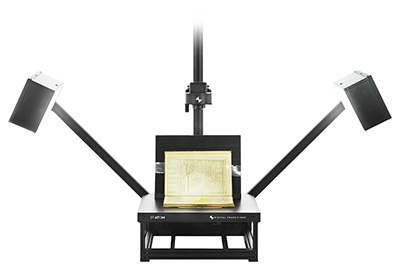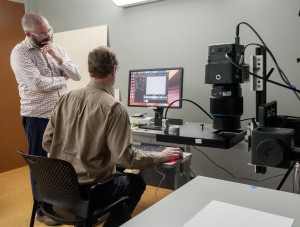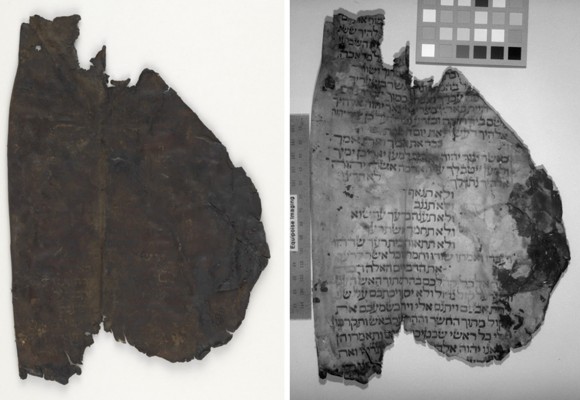Back in March I wrote a blog post about the Library exploring Multispectral Imaging (MSI) to see if it was feasible to bring this capability to the Library. It seems that all the stars have aligned, all the ducks have been put in order, the t’s crossed and the i’s dotted because over the past few days/weeks we have been receiving shipments of MSI equipment, scheduling the painting of walls and installation of tile floors and finalizing equipment installation and training dates (thanks Molly!). A lot of time and energy went into bringing MSI to the Library and I’m sure I speak for everyone involved along the way that WE ARE REALLY EXCITED!
I won’t get too technical but I feel like geeking out on this a little… like I said… I’m excited!
Lights, Cameras and Digital Backs: To maximize the usefulness of this equipment and the space it will consume we will capture both MSI and full color images with (mostly) the same equipment. MSI and full color capture require different light sources, digital backs and software. In order to capture full color images, we will be using the Atom Lighting and copy stand system and a Phase One IQ180 80MP digital back from Digital Transitions. To capture MSI we will be using narrowband multispectral EurekaLight panels with a Phase One IQ260 Achromatic, 60MP digital back. These two setups will use the same camera body, lens and copy stand. The hope is to set the equipment up in a way that we can “easily” switch between the two setups.
The computer that drives the system: Bill Christianson of R. B. Toth Associates has been working with Library IT to build a work station that will drive both the MSI and full color systems. We opted for a dual boot system because the Capture One software that drives the Phase One digital back for capturing full-color images has been more stable in a Mac environment and MSI capture requires software that only runs on a Windows system. Complicated, but I’m sure they will work out all the technical details. 
The Equipment (Geek out):
- Phase One IQ260 Achromatic, 60MP Digital Back
- Phase One IQ180, 80MP Digital Back
- Phase One iXR Camera Body
- Phase One 120mm LS Lens
- DT Atom Digitization Bench -Motorized Column (received)
- DT Photon LED 20″ Light Banks (received)
- Narrowband multispectral EurekaLight panels
- Fluorescence filters and control
- Workstation (in progress)
- Software
- Blackout curtains and track (received)
The space: We are moving our current Phase One system and the MSI system into the same room. While full-color capture is pretty straightforward in terms of environment (overhead lights off, continuous light source for exposing material, neutral wall color and no windows), the MSI environment requires total darkness during capture. In order to have both systems in the same room we will be using blackout curtains between the two systems so the MSI system will be able to capture in total darkness and the full-color system will be able to use a continuous light source. While the blackout curtains are a significant upgrade, the overall space needs some minor remodeling. We will be upgrading to full spectrum overhead lighting, gray walls and a tile floor to match the existing lab environment.
As shown above… we have begun to receive MSI equipment, installation and training dates have been finalized, the work station is being built and configured as I write this and the room that will house both Phase One systems has been cleared out and is ready for a makeover… It is actually happening!
What a team effort!
I look forward to future blog posts about the discoveries we will make using our new MSI system!
______
- Want to learn even more about MSI at DUL?
- Watch an imaging Session
- Read other MSI posts on Duke Libraries’ Bitstreams and Preservation Underground blogs








